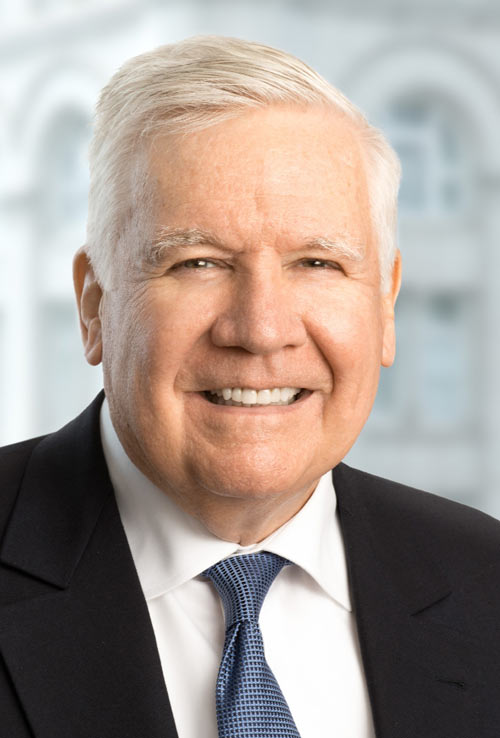
A Healthcare Crisis with a Silver Lining
The nursing shortage puts hospitals and patients at risk while creating new opportunities for nurses.
In healthcare, empirical data guides clinical and economic decisions. Yet the human element—particularly the quality of patient-provider interactions—profoundly influences patient outcomes, including ~ 20% of prescriptive compliance and up to 65% of patient loyalty and trust. Studies have shown that a physician’s bedside manner can significantly impact patients’ health, aiding efforts to lose weight, lower blood pressure, manage painful symptoms and promote post-operative recovery.
Whether it be in the clinic or in an intensive care setting, nurses serve as the primary point of contact for patients—spending more than three times as much time with them than ward hospitalists do, let alone specialists. This increased interaction positions nurses as key determinants of patient care and satisfaction. Over the years, the role of nurses has expanded significantly, with nurses assuming a larger share of more complex and autonomous roles—responsibilities traditionally held by physicians.
The shift has been driven by advancements in medical technology, cost controls, changes in healthcare policies and the need to address provider shortages. For instance, the number of nurse practitioners in the United States has more than doubled from approximately 91,000 in 2010 to more than 190,000 in 2017 while the number of ALL licensed physicians expanded by only 12% in the same period.

Expanded Nursing Roles
Nurse Practitioners represent one way nurses are shouldering a number of increased duties, but there are a number of new fields and specialties representing greater autonomous responsibility while others are reactions to the changes in care delivery itself.
Nurse Practitioners (NPs): Advanced practice registered nurses who can diagnose and treat medical conditions, prescribe medications, and manage patient care independently.
Registered Nurses (RNs): Provide direct patient care, administer medications, and educate patients about health conditions. Their roles have expanded to include care coordination and leadership responsibilities.
Physician Assistants (PAs): Although not nurses, PAs collaborate closely with healthcare teams, conducting exams, diagnosing illnesses, and developing treatment plans.
Home Health Nurses: Deliver medical care in patients’ homes, managing chronic conditions, administering treatments, and providing education to patients and families.
Clinical Nurse Specialists (CNSs): Experts in specialized areas of nursing practice, offering advanced care and influencing healthcare outcomes by providing expert consultation.
Nurse Anesthetists: Provide anesthesia and related care before, during, and after surgical, therapeutic, diagnostic, and obstetrical procedures.
Nurse Midwives: Offer primary care services to women, including gynecological exams, family planning advice, prenatal care, and delivering babies.
This broadening of responsibilities has led to an increased demand for nursing professionals. Reports project that 1.2 million new registered nurses (RNs) will be needed by 2030 to address the current nurse shortage.
While we were banging pots and pans for our healthcare workers in 2020, they were burning out. The COVID-19 pandemic exacerbated the existing shortage, intensifying stress on an already burdened system. In 2021, more than one quarter of nurses quit their jobs as the RN turnover rate peaked at 27.1%: The proverbial straw broke the camel’s back and the field is still in traction.
Unfortunately, this creates even more stress as the remaining care providers stretch themselves thin to cover the gaps. A 2024 article from the American Hospital Association notes that nearly two out of three nurses (63%) reported being assigned to too many patients, with 88% expressing concern over the detrimental effects of staffing shortages on patient care.
A portion of the nursing shortage stems from limited educational capacity rather than a lack of interest. In 2022, approximately 78,000 qualified applicants were turned away from U.S. nursing schools due to insufficient resources. Some approaches have been discovering and addressing the root causes of our provider shortage. As positive evidence accumulated plans have evolved from providing tuition support to addressing systemic issues such as faculty shortages and inadequate facilities. For instance, Bill Conway’s contributions (see below) have enabled the University of Virginia’s nursing school to expand scholarships and support nurses pursuing teaching roles and the Catholic University of America’s nursing school has received more than $64 million—facilitating full scholarships, a new building, and enhanced graduate programs.

SOURCE: Carlyle Group
Bill Conway (at left), co-founder of the Carlyle Group, has embarked on a philanthropic mission to mitigate the nursing shortage in the United States by pledging $1 billion to nursing programs and to promote education. As of February 2025, he has donated $325.6 million to 22 nursing schools, primarily in the Eastern and mid-Atlantic regions. These funds have been allocated for student aid, infrastructure development and faculty recruitment, resulting in the graduation of more than 7,000 nurses to date.
In 2011, the financier announced he would give away $1 billion to create jobs for the poor and asked the public to send him ideas: In came around 2,500 suggestions. Most were sob stories, but some people had good ideas, he says, and several suggested backing bachelor’s degree nursing programs.
“It was along the lines of: If we support potential students to get a nursing degree, then they’ll always be able to get a job and take care of themselves, their families and the rest of us,” remembers Conway. “My wife and I thought that sounded pretty good.”
Lessons Learned
By reviewing the valuable lessons from existing successful programs, we can identify specific investments which are most likely able to mitigate the nursing shortage:
Increased Funding for Nursing Education: Allocating resources to expand nursing programs, hire faculty and build facilities to accommodate more students.
Retention Initiatives: Implementing programs that address nurse burnout, offer competitive salaries and provide professional development opportunities.
Policy Reforms: Advocating for legislation that supports safe staffing ratios, loan forgiveness for nursing graduates and incentives for entering the nursing profession.
Technological Integration: Utilizing technology to streamline administrative tasks, allowing nurses to focus more on patient care.
International Recruitment: Ethically recruiting qualified nurses from other countries to fill immediate gaps in the workforce.
Why does that matter? If you are a prospective or existing nursing student, MAKE SURE to seek additional funding resources which may be available in these areas.
Furthermore, nurses currently practicing should be aware of these initiatives and position themselves to advance their own careers while the assistance and opportunities are available. Remember: Your education should not end when you receive your degree and these programs are designed to INCREASE skills as well as train new nurses.
Education Is an Asset
The influx of newly trained but unexperienced nurses into the field will bring greater competition for roles—pushing hospitals and healthcare facilities to place a stronger emphasis on education, specialization and leadership skills. While demand for nurses remains high, the increasing number of graduates means that entry-level roles may become more competitive. Nurses will need to distinguish themselves to secure promotions or specialized positions and avoid being treated as a commodity or a “headcount.” Advanced credentials not only provide job security but will also open doors to higher-paying and more specialized roles in the healthcare system.
The best way to stay ahead is to focus on earning additional certifications and degrees that already align with career aspirations. Certifications such as the Critical Care Registered Nurse (CCRN), Certified Emergency Nurse (CEN) and Oncology Certified Nurse (OCN) demonstrate expertise in specific areas and increase professional credibility. Many hospitals and healthcare systems are also transitioning toward a Bachelor of Science in Nursing (BSN) as the minimum requirement, making advanced degrees like a Master of Science in Nursing (MSN) or a Doctor of Nursing Practice (DNP) valuable assets. Nurses interested in professional development can explore resources from organizations such as the American Nurses Credentialing Center (ANCC), which provides detailed pathways to certification.
Stand Up and Lead
Nurse executives and educators will play a significant role in shaping hospital policies, mentoring the next generation and ensuring that patient care evolves alongside technological advancements. With the growing emphasis on healthcare quality and patient safety, the need for nurse-led leadership will continue to rise.
Under Value Based Pricing Models (VBPs) like those used by Medicare, patient safety and satisfaction are key drivers of system reimbursement. The transition to Value Based Care (VBC) inherently elevates the role of nurses, positioning them as central figures in delivering patient-centered, efficient, and cost-effective care. Nurses are now more involved in care coordination, patient education, and preventive care strategies.
Health Care administrators are acknowledging the importance of workflow management. To ensure bedside experience translates into better healthcare management, many hospitals are beginning to implement succession planning strategies to train and promote nurses into leadership positions.
Additionally, with thousands of new students entering nursing programs, the demand for educators is surging, creating new career paths for experienced nurses interested in teaching.
Certifications like the Certified Nurse Educator (CNE) or Nurse Executive Certification (NE-BC) help candidates establish themselves in faculty or management positions.
The nursing shortage and accompanying increased funding for education has also created increased demand for experienced nurses as educators. For nurses considering a transition into academia, the American Association of Colleges of Nursing (AACN) offers a comprehensive toolkit titled “Transitioning from Clinical Nursing to Nursing Faculty.” This resource provides valuable insights into the shift from clinical practice to academic roles, addressing potential challenges and offering guidance to ensure a smooth transition. It serves as an excellent starting point for nurses aiming to embark on a career in nursing education. The National League for Nursing (NLN) also offers specialized programs for nurses looking to transition into academia.
Don’t Be Shy About Pay or Benefits
With workforce shortages continuing in many regions, hospitals and clinics are offering competitive pay and incentives to retain experienced nurses. Now is the time for nurses to advocate for higher wages, better staffing ratios, and improved workplace policies.
As hospitals introduce incentive programs for retention and tuition reimbursement, experienced nurses will have more bargaining power to negotiate benefits. By understanding industry trends and advocating for their value, nurses can position themselves for better compensation and career security. The American Nurses Association (ANA), provides resources on advocacy and salary benchmarks to help nurses secure fair compensation.
Stay Cutting Edge
AI-driven diagnostic tools, electronic health records (EHRs) and robotic-assisted patient care are becoming increasingly common, and nurses are playing a crucial role in integrating these tools into daily practice. With these advancements, the role of nurses is evolving from bedside care to data-driven decision-making and patient monitoring.
As AI continues to support clinical decision-making, nurses will need to balance technology with human-centered care, ensuring that advancements improve—not replace—the patient experience. Certifications like the Informatics Nursing Certification (RN-BC) offered by the ANCC can provide nurses with the skills to work in health IT. Additionally, organizations like the Healthcare Information and Management Systems Society (HIMSS) offer training programs in healthcare technology.
Look to the Future
These strategies all have one element in common: being prepared. That could be via education, incentive or opportunity. It could also mean flexibility. Moving forward, nurses who specialize in high-demand fields like geriatrics, mental health or surgical care will see even greater salary growth. Regional shortages already create disparities in pay and work/life balance as hospitals compete for flexible highly-trained staff. Greater competition can also induce hospitals to introduce incentive programs for retention and tuition reimbursement; experienced nurses will have more bargaining power to negotiate benefits—IF they are willing and able to be opportunistic and flexible.
In short, being mobile, educated and available is the best way of ensuring your relevance regardless of what the future holds. Nurses who position themselves as leaders, educators and advocates will have more influence over healthcare policies and innovation. Like most professions of value, the future of nursing is not just about filling roles—it’s about transforming the industry and ensuring nurses have a voice in shaping the future of healthcare.
#NursingCareer | #FutureOfNursing | #HealthcareInnovation | #NurseEducation





